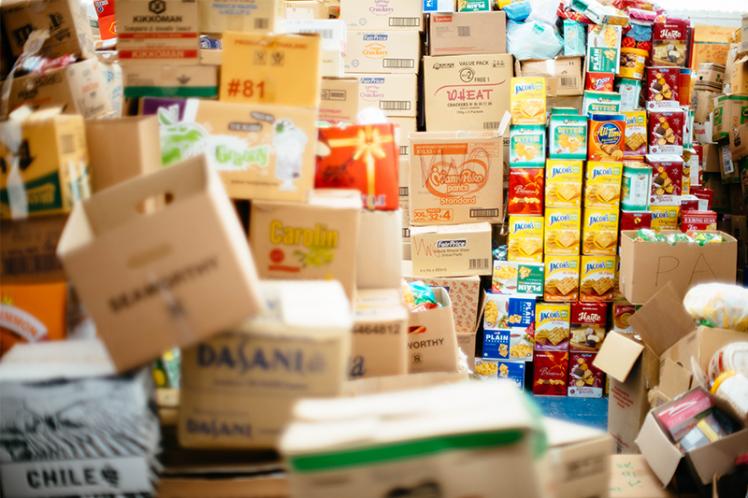What Brand Manufacturers Can Learn from the Rise of Hard Discounters

The emergence of the hard discount format in Europe, Australasia, and the USA has been the most dramatic change in the grocery retail landscape in the last decade.
Hard discounters are defined as retail concepts offering a simple presentation, low prices, and with private labels dominating the product range. Hard discounters also carry only a restricted assortment of basic products (below 2,500 stock keeping units). They have small stores (less than 1,000 square meters) and lower staffing levels.
Unlikely as it may seem, our research indicates that hard discounters have grabbed nearly 20% of the West European market, 30% of Eastern Europe, 12% of Australia, and 5% of the USA.
The two biggest hard discounters are Aldi (2017 revenues of $100 billion) and Lidl ($80 billion), which are now both in the top 5 grocery retailers globally. Aldi has 11,200 stores in 20 countries, Lidl 10,700 stores in 29 countries - but there are others. In the USA, Dollar General (14,300 stores) and Dollar Tree (14,500 stores), which are currently referred to as dollar stores, are somewhat less private label focused but still growing by 7-8% per annum and have sales on $45 billion. Poland is also dominated by a local player, Biedronka, and so is Turkey (BIM).
Powerful brand manufacturers like Danone, Colgate-Palmolive, Procter & Gamble, and Unilever have been taken aback by the success of this primarily private label format. We estimate that the global success of hard discounters is responsible for reducing manufacturer brand sales by half trillion dollars each year. This figure exceeds the combined sales of Procter & Gamble, Unilever, Nestlé, L’Oréal, Coca-Cola, and PepsiCo in that same year by a wide margin. In the face of such private label retail formats occupying significant market share, brand manufacturers are worried about their future. So, how should they respond?
1. Create winning brand propositions
Bizarre as it may seem, but all too often, the hard discounter’s private label product is of better quality than that of leading national brands. Moreover, the innovation machine is stuttering – especially those of large companies. The scientific rules of effective advertising are not followed, while too much money is wasted on promotions. These companies have too many brands to adequately support them all. There is also tremendous potential for new and innovative ways of value creation for hard discounters, such as service infusion, purpose-driven branding and customization.
2. Change your mindset
Fast-growing retailers like Aldi, Lidl, and Biedronka are often seen by manufacturer brands as destroying value because they sell manufacturer-branded products at very low prices. This generates conflict for the manufacturer vis-à-vis their traditional, and often inefficient, channels.
However, these retailers are growing precisely for that reason: they are extremely efficient in getting branded products from manufacturers to end consumers. The lower distribution costs and, consequently, lower prices expand the market for these branded products. Brand manufacturers must follow and distribute their products to where consumers want to shop, or they will be stuck in dying channels. As the CEO of one large company said, “Where the customer buys our type of product, we should be there.” Hard discounters are open to this idea. As they are growing their share, they are increasingly recognizing that brands have a complementary, albeit limited role to play in their product mix. P&G, Unilever, and Nestlé are now selling at Aldi and Lidl. (Efficient retailers are not the enemy!)
3. Engage in private label manufacturing
Private label sales are growing in most Western countries, with hard discounters accounting for most of that growth. As hard discounters only manufacture a small portion of their private label products themselves, this offers opportunities for manufacturers to directly profit from hard discounter success.
There are two alternative strategies for manufacturers to pursue with supplying hard discounters. First, as a dedicated private label producer. Here, the manufacturer only produces private labels, supplying to hard discounters as well as conventional retailers (few only supply hard discounters). Alternatively, the manufacturer can pursue a dual strategy where it makes both its own brands and private labels for the hard discounter. Private label manufacturing for an Aldi, Lidl, or other hard discounter is not for the faint-hearted, but under the right conditions, is a profitable and sustainable strategy.
Conclusion
Hard discounters are here to stay, and their growth is nowhere-near ended yet. A cautious estimate of the total welfare effect of hard discounter success is that consumers save 10% on their grocery bill in Europe and Australia. This translates into a savings of 20 billion euros annually for German shoppers, £16 billion for British shoppers, and 13 billion Australian dollars for Australians. For America, where hard discounters are still emerging, we estimate that burgeoning hard discounter success will allow the average consumer to save 2-3% on their grocery bill or around 20 to 30 billion dollars per year. Now that is real money!
These savings can be used to pay off student loans, purchase better healthcare, add to a retirement fund, or whatever else the consumer needs.
The trend of growing hard discounters should be seen as a warning sign to national brand manufacturers. Most hard discounters succeed without depending heavily on national brands as conventional retailers do. This signals a lack of innovation and consumer relevancy for many national brands, who should think about how they can revitalize their brands to stay relevant in the long term. If not, the premium price they request nowadays will be questioned more and more by retailers as well as consumers.





